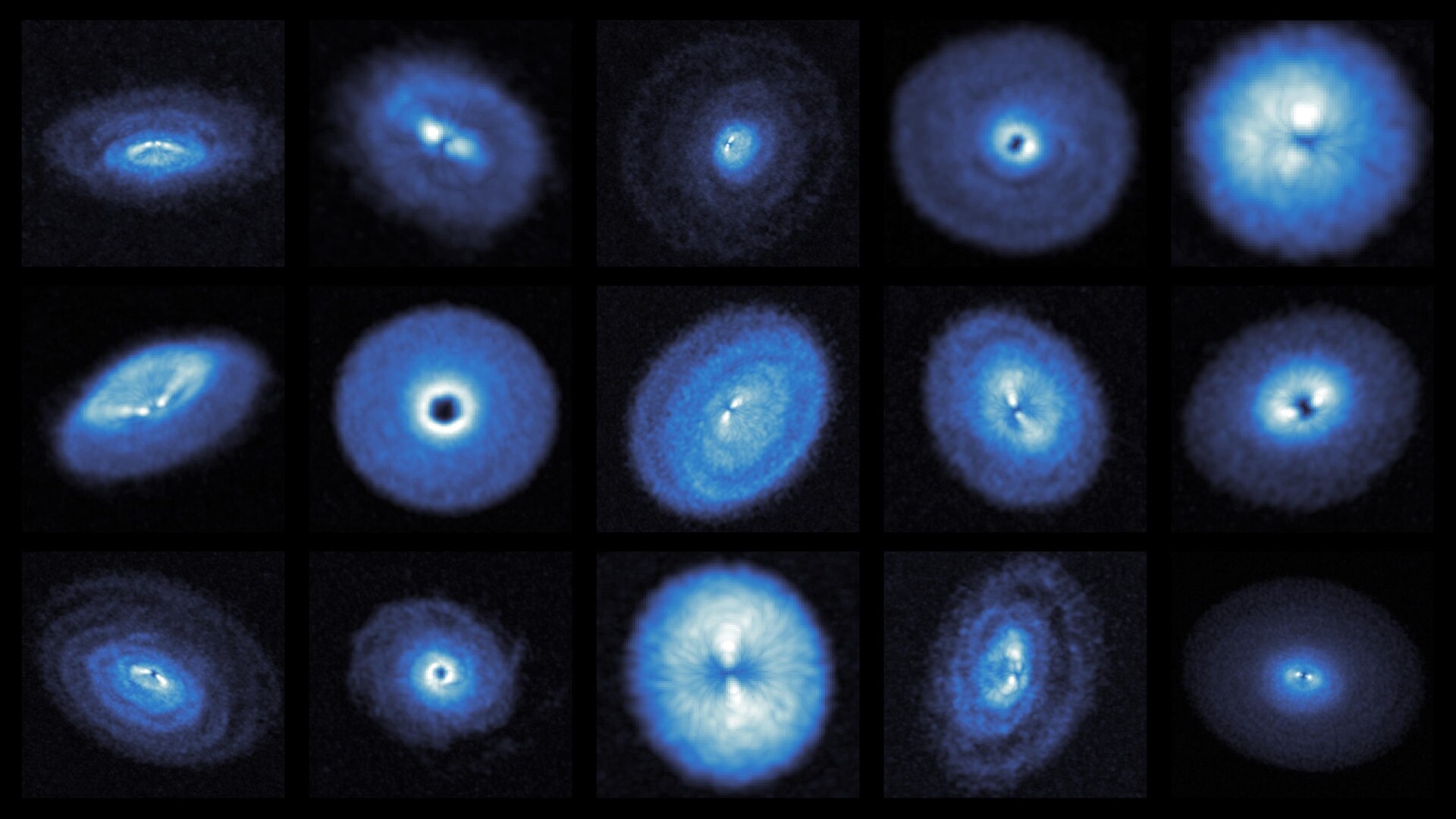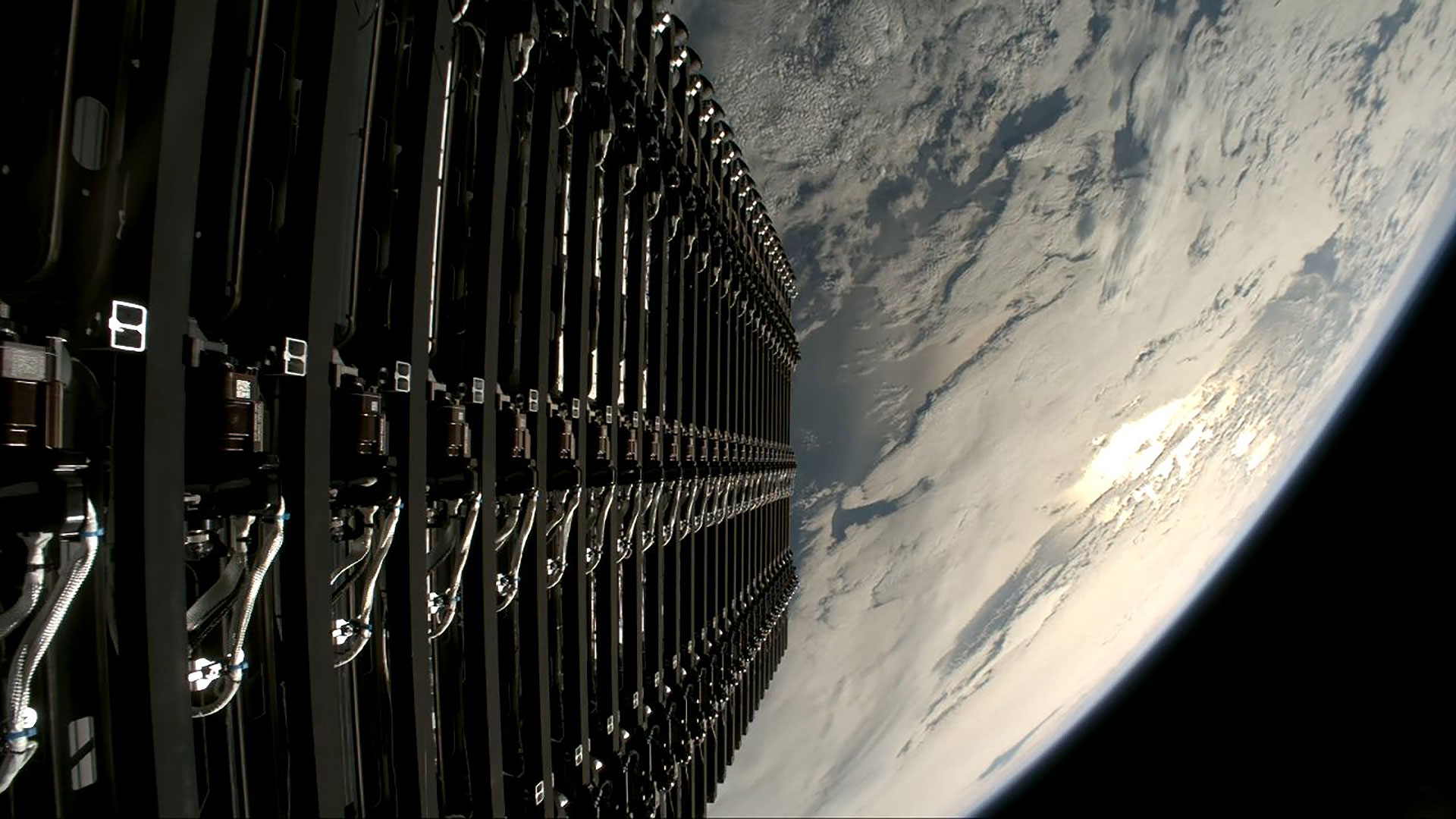Why are our solar system planets tilted? These warped exoplanet-forming disks may offer clues
Most planet-forming disks have warps that can lead to planets on inclined orbits, which could explain where the tilt of Earth's orbit came from.

The origin of the differing tilts in the orbits of the planets in our solar system may have been revealed through the discovery of subtle warps spotted in many planet-forming disks around young stars.
A major observing program with ALMA (Atacama Large Millimeter/submillimeter Array), called exoALMA, has surveyed 15 planet-forming, or protoplanetary, disks in detail. In particular, astronomers led by Andrew Winter of Queen Mary University of London measured the Doppler shift of carbon monoxide gas in each of the disks. The Doppler shift can tell us a gas' velocity and direction of travel, while carbon monoxide is an excellent proxy for other contents of the disks because it has a strong signal at the submillimeter radio wavelengths that ALMA observes at.
The Doppler shift measurements show that the tilt of a disk can vary by between half a degree and two degrees.
"Our results suggest that protoplanetary disks are slightly warped," said Winter in a statement. "This would be quite a change in how we understand these objects and has many consequences for how planets form."
The idealized view of a planet-forming disk is of a swirling torus of gas and dust that is perfectly flat and neatly arranged. The existence of the warps, however, suggests that planet-forming disks are anything but orderly. Instead, it seems that they exhibit a degree of disorder, but the cause of this disorder remains uncertain. Could an unseen companion star's gravity be creating tidal forces that pull on different parts of the disk differently? Or perhaps is it simply the result of chaotic mixing of material in the disk that leads to pockets of dust and gas interacting with each other?
Whatever the cause, there are some commonalities between the disks, principally that the rate at which material is being drawn from the disk onto the young star, helping it grow, seems to be connected to the differing properties of the warps. This implies that there is some kind of dynamical connection between the very inner sanctum of a disk, and the outer part where the warps are found and planets are forming.
Winter's team has even demonstrated in simulations that the warps could be responsible for spiral patterns seen in some planet-forming disks, or temperature fluctuations of up to 10 degrees Celsius between different parts of a disk.
Breaking space news, the latest updates on rocket launches, skywatching events and more!
The warps also mimic the tilts of the orbits of the planets in our solar system. Relative to the sun's equator, Earth's orbit is tilted by 7.25 degrees; Mars' orbital inclination is 5.65 degrees; Jupiter's is 5.51 degrees; and so on.
"These modest alignments may be a common outcome of star and planet formation," said Winter.
The warps may also have an impact on how planets form and find their final orbits in planet-forming disks. Armed with the knowledge that disks have these slight warps, theorists have a new variable to input into their simulations of how planets are assembled, to gain new insights into how our Earth and the other planets of the solar system came to be.
The results are published in the August 27 issue of The Astrophysical Journal Letters.

Keith Cooper is a freelance science journalist and editor in the United Kingdom, and has a degree in physics and astrophysics from the University of Manchester. He's the author of "The Contact Paradox: Challenging Our Assumptions in the Search for Extraterrestrial Intelligence" (Bloomsbury Sigma, 2020) and has written articles on astronomy, space, physics and astrobiology for a multitude of magazines and websites.
You must confirm your public display name before commenting
Please logout and then login again, you will then be prompted to enter your display name.
